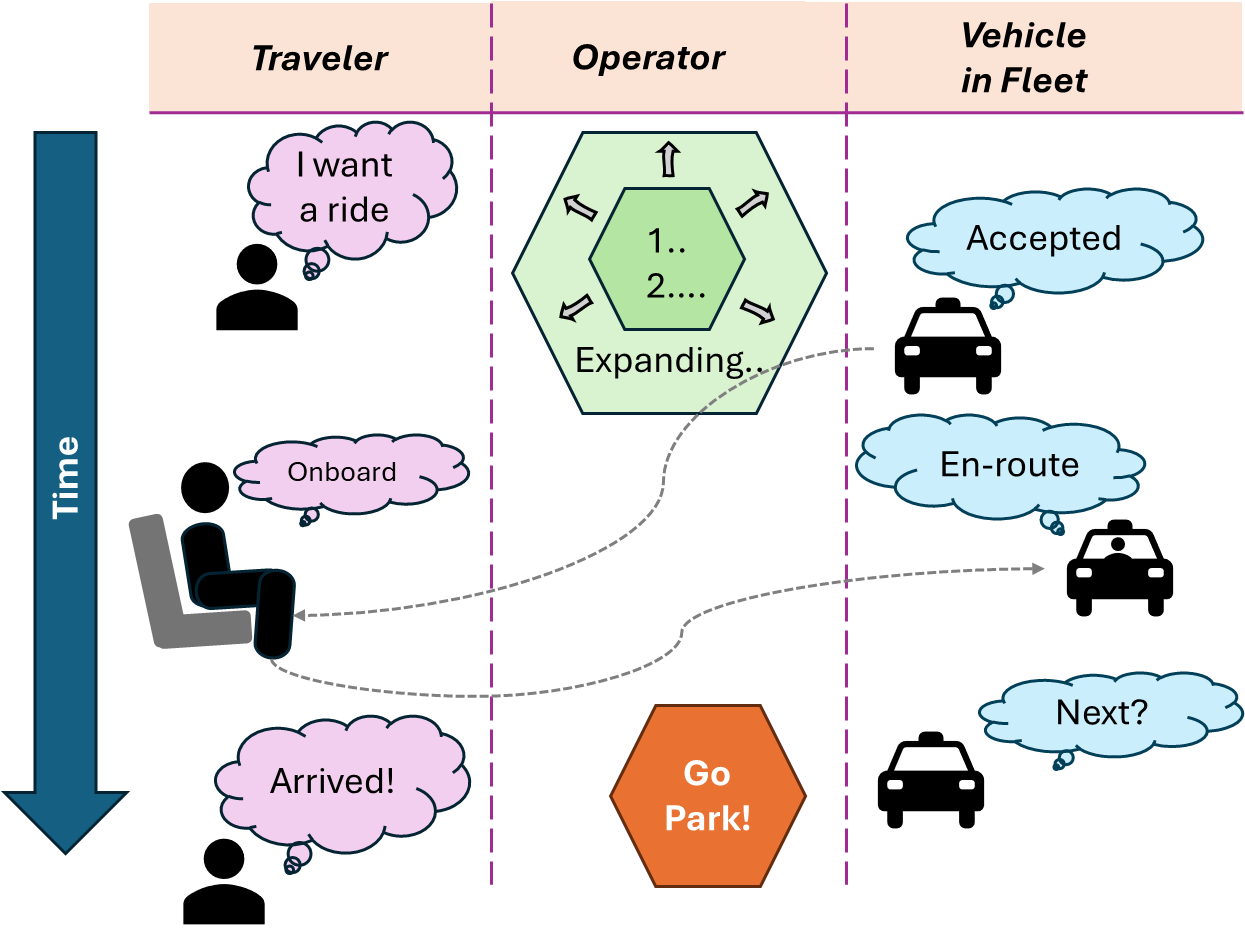Request Data Object in Simulation#
A request data object is used in simulation to pass along information of the intended type of travel using the shared mobility system. The figure below shows how a passenger request would be handled by the module.

Request-related data generated through the sub-sections below are stored in the TNC_Request table of the Demand database in the output directory.
Initial Request#
When demand is generated (or read in), the request object is created with the basic information required such as time of request, type of request (person, on-demand delivery, or e-scooter rebalancing), mode preferred, seating and service characteristics preferred. This information is passed along to the operator.
Operator Updates Request#
The appropriate operator that can handle the request is directed to work on it. The operator attempts to match a vehicle given the constraints imposed. If a vehicle is found, the vehicle is handed the request to proceed in picking up and dropping off the request. If not, the request is passed back to the the person agent, or household, or e-scooter fleet operator that their request cannot be served. Each of these entities handle replanning of how to proceed with their travel day differently.
Vehicle Accepts Request#
Once a vehicle has accepted a request, the vehicle plans its schedule to pick up the request. This may occur immediately if the vehicle was idling, or may occur after completing ongoing tasks (such as picking or dropping off another request). Request data on time of pickup, time of dropoff, fare levied, discounts offered, etc., are updated in the request.
Request Completed#
Once the request is completed, the data contained in the Request object is processed and stored in the database. Not all details are an output to the database, but any information necessary for analysis that is created or stored during simulation can be provided as an output.